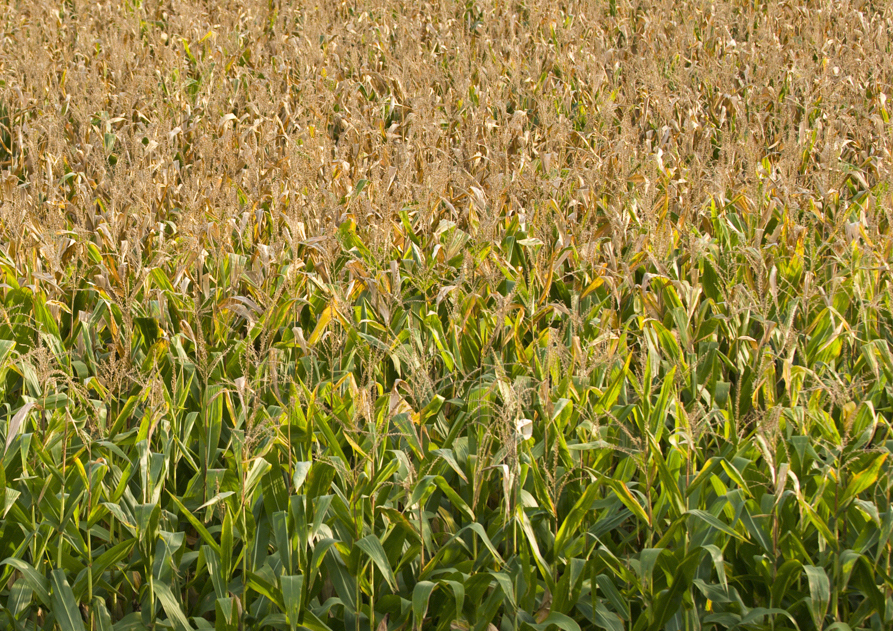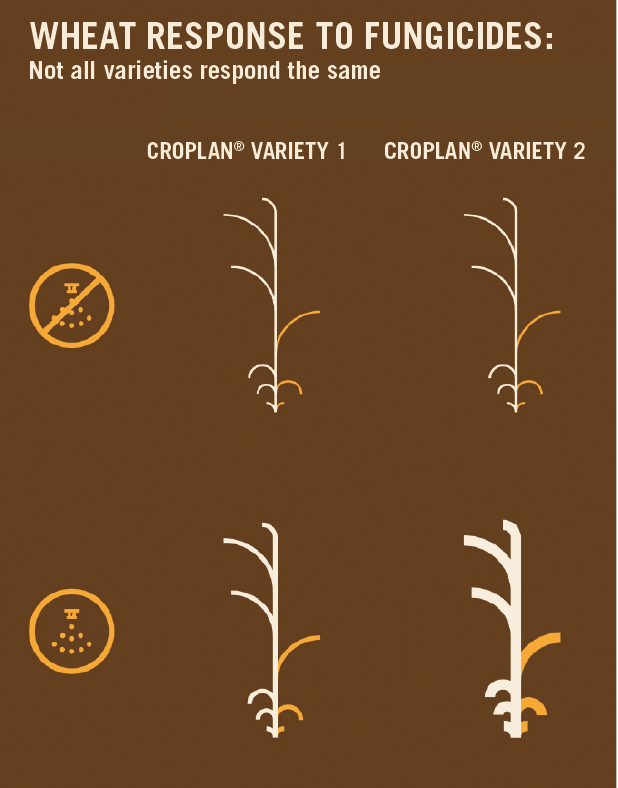Can Your Wheat Variety Benefit From a Fungicide at Flag Leaf?

Can Your Wheat Variety Benefit From a Fungicide at Flag Leaf?
Mark Torno
Diverse Field Crops Product Manager Wheat, Canola, Sunflower
Garrison, ND
Our wheat management research efforts have yielded some valuable gems in recent years. One finding is that you have a great opportunity to optimize the yield potential of certain wheat varieties by applying a fungicide at flag leaf, whether disease pressure is present or not.
Flag leaf is the most important stage for grain fill, as that top leaf is responsible for harnessing more than 50 percent of the plant’s photosynthetic power from the sun. So, it makes sense that a healthier flag leaf would contribute to building more yield.
Producers have long questioned whether applying a fungicide at flag leaf is worth the time and effort since they’ll have to make another fungicide pass at heading anyway, often in as little as two weeks later. Flag leaf comes at a time when farmers are usually busy with other work and the fungicide must be applied inside a small window to be effective. Plus, disease pressure has always been a significant consideration when determining whether or not a fungicide at flag leaf is even necessary. So, unless they’ve been scouting their fields and find that a disease like rust is of substantial concern, farmers usually end up skipping this application.
But data from Answer Plot® research trials has prompted a major shift in thinking by showing that some wheat varieties respond better to a fungicide application at flag leaf than others. As the graphic illustrates, CROPLAN® variety 2 responds to the treatment by putting more energy into building yield than CROPLAN variety 1, making it more conducive to a flag leaf fungicide application.

For example, CROPLAN CP3530 has yielded 6.1 bu/A more than the untreated check when a fungicide was applied at flag leaf. On the other hand, CROPLAN CP3419 has yielded only 3.2 bu/A more than the untreated check when a fungicide was applied at flag leaf.* We believe these responses don’t relate back to disease prevention as much as they are instead based on the efficiencies improved within the plant.
As a result of this research, we’ve given each CROPLAN spring wheat variety its own RTF score at flag leaf. If planting a variety with a high RTF score, give some strong consideration to including a flag leaf fungicide application into your crop management plan at the beginning of the season and scheduling an applicator well in advance.
Here are some things to keep in mind when considering a fungicide treatment at flag leaf in your fields:
- Apply the right fungicide. RustEase®, Nexicor™ Xemium®, Stratego® and Quilt® Xcel are popular choices for flag leaf applications.
- Proper application timing is crucial. To achieve the best results, the flag leaf should be 50 percent emerged to fully emerged when you apply the fungicide. Therefore, continuously scout your crop leading up to flag leaf so you’re ready to go when the time comes.
- Fungicides at flag leaf can pay even when wheat prices are low. You might tend to shy away from making additional crop investments when spring wheat futures are on the low side. But if your wheat varieties have a strong RTF and you have a high yield environment, a fungicide application at flag leaf still has the potential to pay off.
We’re committed to identifying advanced wheat management practices that can help keep your acres more profitable. There’s always value in consulting your locally owned and operated WinField® United retailer when making crop protection treatments, so schedule a visit with your agronomist. They will review agronomic conditions and RTF research findings to help you make the best decisions for your acres.
* Source: 2015-2017 Answer Plot trials (22 locations in ND, SD and MT). Untreated check included two fungicide applications: 3-5 leaf stage and heading. Treated plots included three total applications: 3-5 leaf, flag leaf and heading.
© 2020 WinField United. Important: Before use always read and follow label instructions. Crop performance is dependent on several factors many of which are beyond the control of WinField United, including without limitation, soil type, pest pressures, agronomic practices, and weather conditions. Growers are encouraged to consider data from multiple locations, over multiple years, and be mindful of how such agronomic conditions could impact results. Answer Plot®, CROPLAN®, R7®, RustEase®, WinField® are trademarks of WinField United. Nexicor™ and Xemium® are registered trademarks of BASF. Stratego® is registered trademark of Bayer Aktiengesellschaft. Quilt® is a registered trademark of a Syngenta Group Company.


